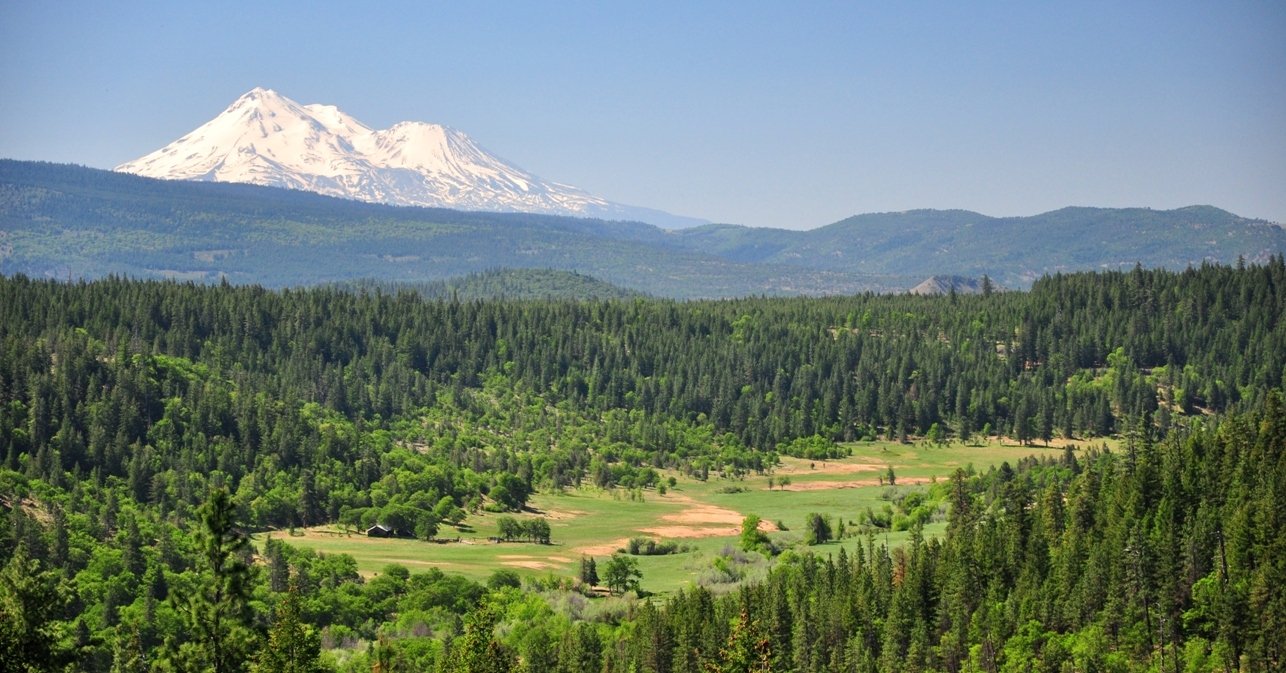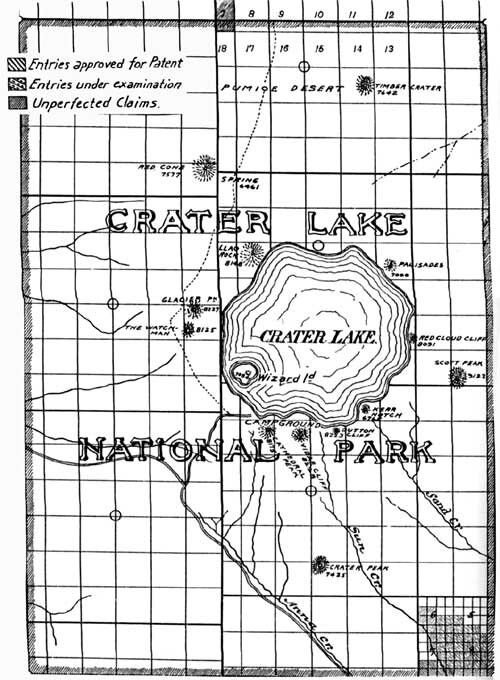The world’s largest ecosystem management plan is under existential threat.
Read MoreThe Unmaking of the Northwest Forest Plan, Part 1: Out with Enforceable Substance and in with Performative Process

Department of Interior
The world’s largest ecosystem management plan is under existential threat.
Read MoreThe history of congressional and other actions to facilitate retirement of federal grazing permits
Read MoreAny inventory reveals that most of the nation’s mature and old-growth forests have fallen to the saw. Not only must all that remains remain, but degraded forests should also be allowed to become mature and old-growth forests once again.
Read MoreThe nation’s largest land manager is proposing a new “conservation” rule that might result in improved land management but more likely will serve as a shield for the agency to continue to degrade public lands at the expense of this and future generations.
Read MoreUnderstanding the history of public lands is useful if one is to be the best advocate for the conservation of public lands.
Read MoreWe don’t have to despoil the environment and view off the shore of Oregon to produce carbon-free electricity.
Read MorePresident Biden is poised to enter the pantheon of forest-protecting American presidents.
Read MoreThis is the third of three Public Lands Blog posts on 30x30, President Biden’s commitment to conserve 30 percent of the nation’s lands and waters by 2030. In Part 1, we examined the pace and scale necessary to attain 30x30. In Part 2, we considered what constitutes protected areas actually being “conserved.” In this Part 3, we offer up specific conservation recommendations that, if implemented, will result in the United States achieving 30 percent by 2030.
Top Line: Enough conservation recipes are offered here to achieve 50x50 (the ultimate necessity) if all are executed, which is what the science says is necessary to conserve our natural security—a vital part of our national security.
Figure 1. The Coglan Buttes lie west of Lake Abert in Lake County, Oregon. According to the Bureau of Land Management, it “is a dream area for lovers of the remote outdoors, offering over 60,000 acres of isolation,” and the land is “easy to access but difficult to traverse.” The agency has acknowledged that the area is special in that it is a “land with wilderness characteristics” (LWCs), but affords the area no special protection. Congress could designate the area as part of the National Wilderness Preservation System (Recipe #24), or the Biden administration could classify it as a wilderness study area and also withdraw it from the threat of mining (Recipe #1). Source: Lisa McNee, Bureau of Land Management (Flickr).
Ecological realities are immutable. While political realities are mutable, the latter don’t change on their own. Fortunately, there are two major paths to change the conservation status of federal public lands: through administrative action and through congressional action.
Ideally, Congress will enact enough legislation during the remainder of the decade to attain 30x30. An Act of Congress that protects federal public land is as permanent as conservation of land in the United States can get. If properly drafted, an Act of Congress can provide federal land management agencies with a mandate for strong and enduring preservation of biological diversity.
If Congress does not choose to act in this manner, the administration can protect federal public land everywhere but in Alaska. Fortunately, Congress has delegated many powers over the nation’s public lands to either the Secretary of the Interior or the Secretary of Agriculture (for the National Forest System), and—in the sole case of proclaiming national monuments—the President.
Potential Administrative Action
Twenty-two recipes are offered in Table 1 for administrative action by the Secretary of the Interior, the Secretary of Agriculture, or the President. The recipes are not mutually exclusive, especially within an administering agency, but can be overlapping or alternative conservation actions on the same lands. While overlapping conservation designations can be desirable, no double counting should be allowed in determining 30x30. A common ingredient in all is that such areas must be administratively withdrawn from all forms of mineral exploitation for the maximum twenty years allowed by law.
Mining on Federal Public Lands
An important distinction between federal public lands with GAP 1 or GAP 2 status and those with lesser GAP status is based on whether mining is allowed. Federal law on mineral exploitation or protection from mining on federal public lands dates back to the latter part of the nineteenth century with the enactment of the general mining law. Today, the exploitation of federal minerals is either by location, leasing, or sale. The administering agency has the ability to say no to leasing and sale, but not to filing of mining claims by anyone in all locations open to such claiming.
When establishing a conservation area on federal lands, Congress routinely withdraws the lands from location, leasing, or sale. Unfortunately, when administrative action elevates the conservation status of federal public lands (such as Forest Service inventoried roadless areas or IRAs, Bureau of Land Management areas of critical environmental concern or ACECs, and Fish and Wildlife Service national wildlife refuges carved out of other federal land), it doesn’t automatically protect the special area from mining.
Congress has provided that the only way an area can be withdrawn from the application of the federal mining laws is for the Secretary of the Interior (or subcabinet officials also confirmed by Congress for their posts) to withdraw the lands from mining—and then only for a maximum of twenty years (though the withdrawal can be renewed). A major reason that particular USFS IRAs and BLM ACECs do not qualify for GAP 1 or GAP 2 status is that they are open to mining.
More Conservation in Alaska by Administrative Action: Fuggedaboutit!
The Alaska National Interest Lands Act of 1980 contains a provision prohibiting any “future executive branch action” withdrawing more than 5,000 acres “in the aggregate” unless Congress passes a “joint resolution of approval within one year” (16 USC 3213). Note that 5,000 acres is 0.0012 percent of the total area of Alaska. Congress should repeal this prohibition of new national monuments, new national wildlife refuges, or other effective administrative conservation in the nation’s largest state. Until Congress so acts, no administrative action in Alaska can make any material contribution to 30x30.
Potential Congressional Action
Twenty-two recipes are offered in Table 2 for congressional action. The recipes are not mutually exclusive, especially within an administering agency, but can be overlapping or alternative conservation actions on the same lands. However, they should not be double-counted for the purpose of attaining 30x30. A commonality among these congressional actions is that each explicitly or implicitly calls for the preservation of biological diversity and also promulgates a comprehensive mineral withdrawal.
Bottom Line: To increase the pace to achieve the goal, the federal government must add at least three zeros to the size of traditional conservation actions. Rather than individual new wilderness bills averaging 100,000 acres, new wilderness bills should sum hundreds of millions of acres—and promptly be enacted into law. Rather than a relatively few new national monuments mostly proclaimed in election years, many new national monuments must be proclaimed every year.
For More Information
Kerr, Andy. 2022. Forty-Four Conservation Recipes for 30x30: A Cookbook of 22 Administrative and 22 Legislative Opportunities for Government Action to Protect 30 Percent of US Lands by 2030. The Larch Company, Ashland, OR, and Washington, DC.
Unfortunately, “America the Beautiful” represents a gross dereliction of the duty of the Biden administration to future generations.
Read MoreNo new national park proposal in Oregon has made it past the finish line since the establishment of Crater Lake National Park in 1902. Oregon’s only national park has had two very modest additions since then, in 1932 and in 1980.
Read MorePart 2 discusses multiple failures to establish additional national parks in Oregon.
Read MoreThere are national parks and then there are other units of the National Park System—all administered by the National Park Service. The United States has 62 national parks. It has another 357 units that are also part of the National Park System but go by another name (national whatevers). Herein we focus on the one national park in Oregon.
Read MoreThere may (or may not) soon be an existential threat to over two million acres of federal public forestlands in western Oregon administered (for now, at least) by the Bureau of Land Management. Northwest Forest War III may be in the offing, and such would be a good thing.
Read MoreWhile the how, when, where, and why of mining on federal public lands is important (see Part 1), at least as important is where notto mine on federal public lands. These include places where the public’s interest in the conservation of natural, historical, and cultural values outweighs the value of any minerals that might be had, places that have been reserved for the benefit of this and future generations rather than for the benefit of today’s corporation.
Read MoreToday anybody, including foreign companies (as long as they own a domestic corporate shell), can enter most federal public lands and stake a claim, which the government treats as a right to mine. The government cannot say no to such hardrock mining, no matter how inappropriate.
Read MoreDebunking Creation Myths About America’s Public Lands. 2018. John D. Leshy. Salt Lake City: University of Utah Press. $7.95 (Amazon $7.15).
America’s public lands are often in need of a good lawyer, and they have one in John Leshy. He has served America’s public lands (and its owners) as an academic, author, and advocate. In his long career, he’s published legal textbooks, written briefs, argued cases, and taught law students, and he was the top lawyer in the U.S. Department of the Interior for almost as long as Bruce Babbitt was secretary of the interior.
Read MoreElections matter, and the 2018 midterm election mattered a lot.
Read MoreFor economic, environmental, and societal reasons equally applicable to today’s and future generations, the United States should eschew any new offshore oil and gas exploitation and continue its progress toward a fossil fuel–free sustainable energy economy a decade or two earlier than it otherwise would.
Read MoreThe Trump administration is proposing to open up vast areas of the United States Outer Continental Shelf (OCS) to leasing for oil and gas, far larger than the area made available under the Obama administration.
Read MoreThe Trump administration is trying to allow a 12-mile road through the Izembek National Wildlife Refuge and wilderness area in Alaska.
Read More















